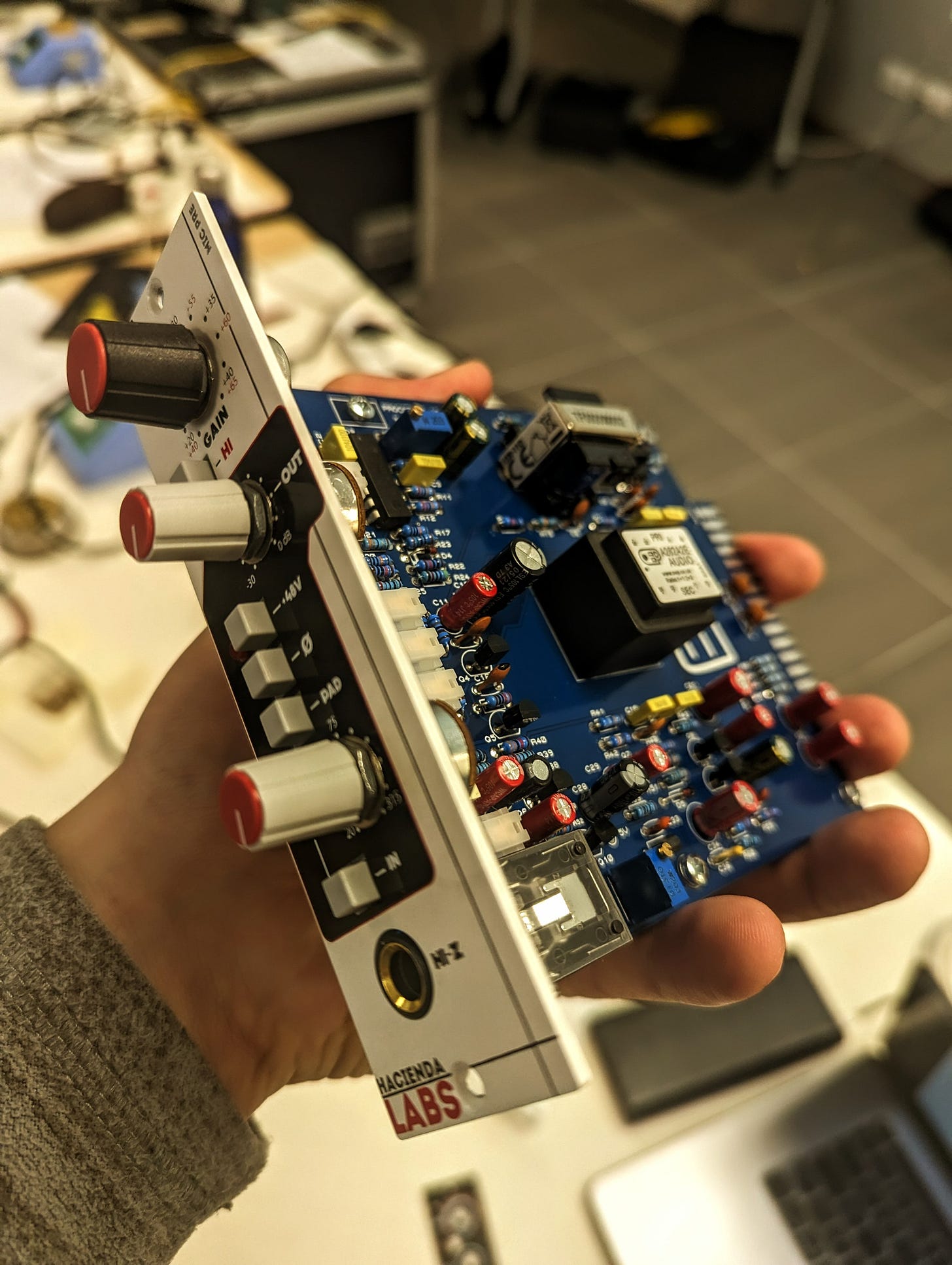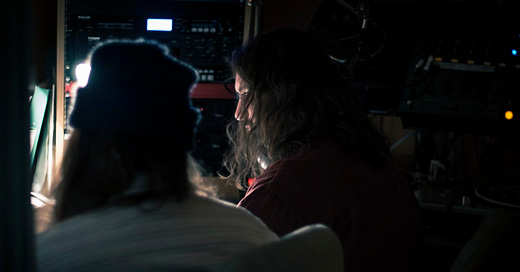Do you ever have days where you just get lost in it all?
The world gets a little too heavy…
I’ve been there.
:(
As much as I want
to exist as a resource for sharing with you detailed aspects of my work and insights into my craft, there exists within that certain elements that remain a mystery even to me. Here in this mysterious place, often forecast with clouds of ennui, is where I encounter my desire to create, to experiment, to sit and listen.I have concentrated a considerable part of my life to focusing on listening. Human, environmental, critical, deep, attentive, selective (not that often I promise!) — for me the act of listening has reached a point where pleasure and business merge, so much so that I seem to have learned subconsciously to turn off other parts of my creative being.
Whereas once a guitar, synthesiser or drum machine might have charmed a melodic blossom of creative energy into the sound card of my computer, or the voice recorder on my phone, I have since grown weary of techno-centric tools and the increasing investment of time and energy into assimilating new softwares, plugins, DAW’s and digital protocols. Searching for pixels to connect the dots, I felt quickly consumed by the 1’s and 0’s.

There are clearly advantages to embracing these advances though…
Izotope’s latest range of alchemical audio tools, Rekordbox and the newly released Ableton 12 software have become daily rituals for me in my studio practice — all are phenomenally well engineered, creative playgrounds for sound creation.
Since arriving here on Substack, I’ve taken great comfort and inspiration from discovering the creative worlds and methods of other artists exploring and opening up on their craft.
Here are some choice recommendations worth checking out if you have the time :
•
shares wonderful works and fragments from his sensationally lush archives and studio sessions with•
shares beautifully curated instrumental compositions formed from “seeds” opening up on his creative thought process•
writes incredibly insightful conversations on listening, climate change and sonic environments with•
shares his studio notebook of sounds, music and field recordings with•
explores the cracks and hidden beauty in sound, nature and technology with•
shares delicately crafted audio postcards and sonic inspirations with•
shares fascinating insights into all aspects of electronic music production, creating beeps and beats with•
shares his wonderful listening adventures using experimental recording techniques withWorking in sound production for many years has taught me that it’s a good idea to discipline yourself when it comes to buying new equipment - to distinguish with some notion of responsibility between what you think you want and what you actually need.
But then isn’t that just the way the world turns…?
On this occasion, I felt inspired to discover something new. To reconnect with a state of creation that had floated away from me over time. I was determined to find a new pathway that would encourage a new perspective for playing with sound…
This little sound byte is taken from a work in progress titled “Nightcrickets”.
Starting out as a recording made from my balcony of crickets singing late into the night, I then processed, tweaked and wandered my way to this coming together of sounds - made entirely using a new tool I brought into my studio just a few weeks back - GENERATIONS.
“A bridge between the physical world of performance and the digital world in which sounds are created”
GENERATIONS is a DIY MIDI controller designed for creating generative, ambient soundscapes. This isn't a traditional, performance-based MIDI controller, although it can certainly be used as such. Instead, it IS the performer: creating autonomous, self-evolving patterns from your own sound sources. A bridge between the physical world of performance and the digital world in which sounds are created.
You can check out further samples of its genius by heading over here…
I got in touch with the ambient artist and creator of GENERATIONS - Innesti - to ask a little about his creative practice and the inspiration behind his work conceiving and producing his own experimental musical tools.
Welcome Innesti. Thank you for taking the time to contribute to Sonic Tapestries.
This year saw the release of the wonderful GENERATIONS. What inspired you to first begin working on designing creative studio tools?
As I continued the Innesti project, I lost my ability to use the older web-based tools that had moved me into this space: libraries became outdated, incompatibilities emerged, etc. I was longing for the option to take some of those older ideas and use them again.
One of the older programs I had written simulated the motion of objects on a screen--objects that were bound by simple physical rules. But the way those objects would interact was somewhat unpredictable and emergent, and I wanted to use that behavior to control music. Generative music, of course, has been around forever. But I am a DIY kind of guy, and I like to create things when I can.After spending some time building a eurorack modular system in 2021, I found that I enjoyed the idea of working with hardware rather than just using my mouse in my DAW. So I decided to build a hardware midi controller that could be used to perform music and control various parameters in a dynamic, generative fashion. Thus, GENERATIONS was born.
I love GENERATIONS because it is important for me to have some unpredictability in the music I'm creating. If I know everything that is happening and can control it, then the music loses some of its mystery. GENERATIONS provides the perfect balance between novelty and familiarity: I can choose the sounds or samples that it is controlling, but the way those sounds are played becomes completely unexpected.
When producing your music - do you use a lot of digital processing to create your sound or do you tend to keep things natural and organic?
My music is pretty minimal, typically involving nothing more than two performed tracks and a few flourishes or field recordings. So, although most of it is processed in some form with some effects, I don't do a lot of editing, slicing, and rearranging. Almost everything I do, however, is electronic, and typically digital, from software-based synths (e.g., Serum) to my digital audio workstation. If I'm working with acoustic sounds, those are always sampled in some way and re-processed.
Do you have a particular non-musical practice that helps to put you into the creative mindset for writing or recording?
I don't. I strongly believe that the creative process is a result of "doing" rather than waiting for inspiration to strike. So, more than anything, I just try to record, improvise, and experiment on a regular basis. Most of it goes nowhere, of course. But every once in a while, something shines through.
You’ve been releasing music as Innesti since 2018. What inspired you to follow this path?
When I was younger, I made and recorded music with my friends. But, as the years went by and I became focused on career and family, music fell to the wayside. I still loved listening to music, of course. Ambient music in particular is my favorite because it works so well as background music when I'm reading, writing, programming, etc. But, I was worried that modern music technologies had evolved to a point that it would be impossible for me to figure out how to do it again. I was used to tape recorders and 4-tracks, and modern musicians were talking about things I didn't understand, like DAWs, DACs, FM synthesis, etc.
Nonetheless, I do a bit of coding, both for work and for fun. At some point I stumbled across a javascript API for working with web audio and was having a ton of fun playing with it: making simple synthesizers with hand-drawn wave forms, creating interactive modulations for filters, etc. At some point I realized that I was "doing" the things I didn't understand. That was a turning point, and I started making ambient music with intention.
You mention on your artist profile that you create ethereal, minimal ambient soundscapes created with field recordings, organic synthesis, quiet conversations, and stories from our past. What inspires you to begin working on a track in the studio? Tell us perhaps about the first step in your creative process…
I don't think I begin in any unusual ways. But I'm searching for quiet places in my music: I like sounds that breathe. So, although I might begin simply by experimenting and exploring progressions, patches, etc., I tend to "lock in" when I feel something that ebbs and flows or makes me feel like I'm suspended above the world. Once I stumble across something like that, it is typically a matter of adding some complexity, exploring additional textures, and doing a bit of transposition to keep things varied in a way that is subtle and non-intrusive.
Could you tell us a little more about your studio - what equipment or software do you cherish most?
My favorite piece of equipment is the Arbhar by Instru. It is a eurorack module that functions as a granular looper. I love feeding it sounds and letting it play back random grains in musical ways. I have a love-hate relationship with it, however. It is noisy, and bleeds a lot of unwanted frequencies into my recordings. But it is magical.
You're in the studio about to write something new. What is the first thing you reach for?
I typically begin in one of two ways. I either begin by simply improvising on a piano--trying to find a melody or a progression that is worth building upon. Alternatively, I begin in a "sound design" mindset, building up patches, adding effects, and trying to create interesting layers.
What is your approach to field recording? Do you seek particular sounds or do you record first and scan back through later when listening back in the studio?
Field recordings are often featured in Innesti tracks, but I tend to use them to fill certain regions of the frequency spectrum rather than as focal sounds on their own. I tend to record in low mids and often feel that I need a little something "else" to fill the higher end. So I'll just grab my Tascam recorder and go for a walk and record the sounds I hear. I'm rarely seeking out anything in particular. I like urban sounds (e.g., traffic) as well as natural sounds (e.g., rain, running water). And I love processing them a bit to blur the lines between the organic and the inorganic.
Do you have plans to work on designing other studio tools or instruments moving forward?
You bet. I'm currently working on a few distinct ideas. One is a grid-based controller. Those are a dime a dozen, of course, but this one will feature some neat generative tricks. I'm also building a sample player that I hope to sell with my next CD release (hopefully around May 2024). It will be an "ambient object"--something that has a soothing light display, but also serves as a sound device for playing tracks from the new album.
Sonic Tapestries is a reader-supported publication. To receive new posts and support my work, please consider becoming a free subscriber.
Your kind support helps me to grow my audience and continue on my creative path.
If you do like reading along and want to help support my work further, please consider sharing this post with your friends, family and followers.
Thank you for being here with me.
Mat
🌻









Great post, so many interesting things! And thank you for the mention! 🙏
Thank you ever so much for the mention! I’ve bookmarked the post to read later when I’ve some peace and quiet at home. We’re bombarded by relatives lol!!